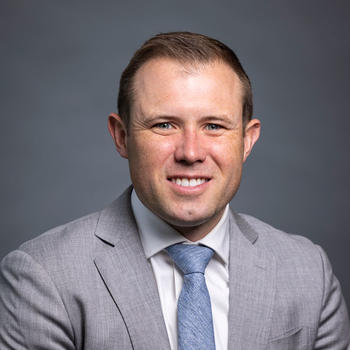A George Mason University professor unpacks the complex, nuanced impact of the “revolving door” between industry and regulators in the accounting world.
In their auditing capacity, accounting firms, such as the “Big Four”—Deloitte, EY, KPMG and PWC—function as watchdogs for publicly traded companies. They’re tasked with ensuring financial disclosures are accurate and above board. But who watches the watchdogs?
The Sarbanes-Oxley Act of 2002 created the Public Company Accounting Oversight Board (PCAOB), whose mandate is to monitor and inspect firms conducting audits of public companies and report its findings to the public. Yet, in a pattern familiar from other government-industry configurations, the border between regulator and regulated is often less a brick wall than a revolving door. Large accounting firms, including the Big Four, have been hiring more and more PCAOB employees, especially since 2010, when the board expanded its remit to include internal control audits.

“Firms began moving in the direction of hiring significant numbers of PCAOB employees after a string of weak inspection reports in the early 2010s, ostensibly to get a sense of what they could do to better comply with auditing standards,” says Steve Maex, an assistant professor of accounting in the Donald G. Costello College of Business at George Mason University.
Maex’s recently published paper in Review of Accounting Studies, co-authored with Jagan Krishnan and Jayanthi Krishnan from Temple University, evaluates the effects of such hiring. The researchers tracked the audit quality of large accounting firms over the period in which this hiring emerged and explored the relationship between the hiring and a variety of audit outcomes.
“There’s no single proxy that can be used to capture the many dimensions of audit quality,” Maex points out. So, the team used various indicators, including clients’ financial restatements, discretionary accruals (disparities between reported income and cash flow), the accuracy of internal control opinions issued by the auditor, and audit fees.
The researchers found that clients of firms that hired ex-PCAOB employees issued fewer restatements in general, which suggests fewer egregious errors on the part of the auditor. Further, for clients that would be more pre-disposed to misstating their financials, this quality-enhancing effect was also identified in terms of lower discretionary accruals, higher accuracy of internal control audit opinions, and higher fees that clients were willing to pay. In other words, the former PCAOB personnel seemed to help their firms focus on the highest risk issues and clients in their portfolios.
Maex and his coauthors surmise that these professionals, during their experience with PCAOB, acquired “regulatory audit quality expertise” that would not be as easily accessible to those without such experience. “The practitioners we interviewed said that [at the PCAOB] you get exposed to a variety of different audit practices and processes and develop an understanding of what works and does not work well. This contrasts with many audit firm partners who start and finish their career in the same accounting firm and therefore may only be exposed to their own firm’s methodology and a handful of clients that they support,” he explains.
This broad-based, generalizable skillset involves a greater aptitude for gauging and addressing risk. “To the extent that they can help the firm identify high-risk clients, that right off the bat can help them allocate resources intelligently. These individuals are going to be really good at finding strategies, solutions, and methodologies to handle the firm’s high-risk clients more effectively.”
For Maex, these findings form part of an active stream of accounting research studying the role of regulatory oversight on auditing firms. Furthermore, the work is relevant in light of recent events in which ex-PCAOB auditors at KPMG tipped off the firm about the board’s inspection plans. The ensuing scandal sparked debate about possible misconduct enabled by the revolving door.
Maex’s research highlights that the movement of former regulators to accounting firms offers potential upsides for audit quality notwithstanding these ethical considerations. Rather than seeking to inhibit transfers on ethical grounds, regulators could explore different types of talent exchanges with firmer guardrails against misconduct. The SEC’s Professional Accounting Fellows program, which admits experienced accounting professionals for a limited period of time and under fixed parameters, could serve as a model.
“The goal of the regulators, we like to think, is the same as the audit firms: to ensure audit quality is as strong as it could be,” Maex says. “If there were no conversations about how to achieve that between the two, that could be problematic. The challenge is balancing that against the negative outcomes, which receive significant publicity when they occur.”
- April 18, 2024
- April 16, 2024
- April 10, 2024
- April 5, 2024
- April 3, 2024
